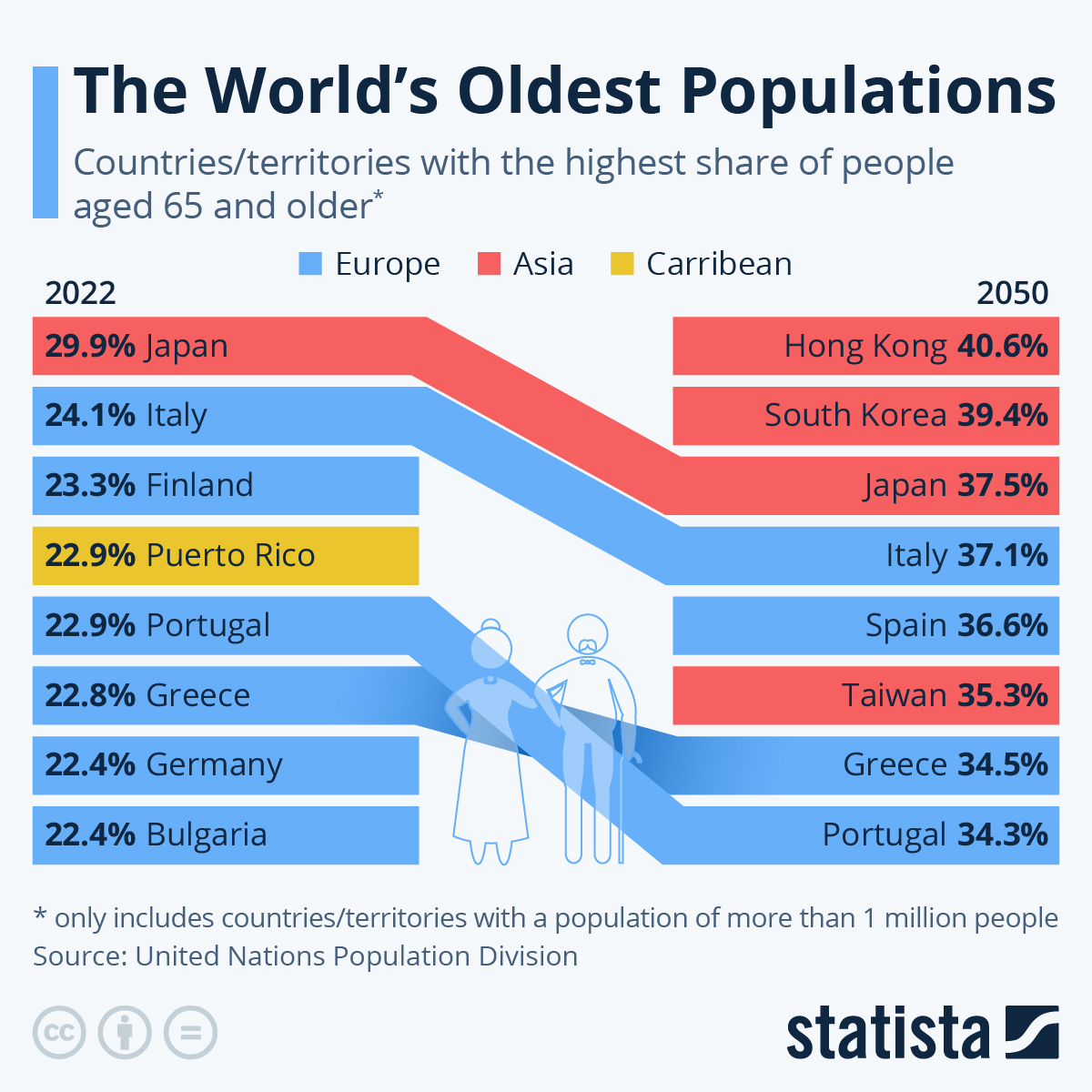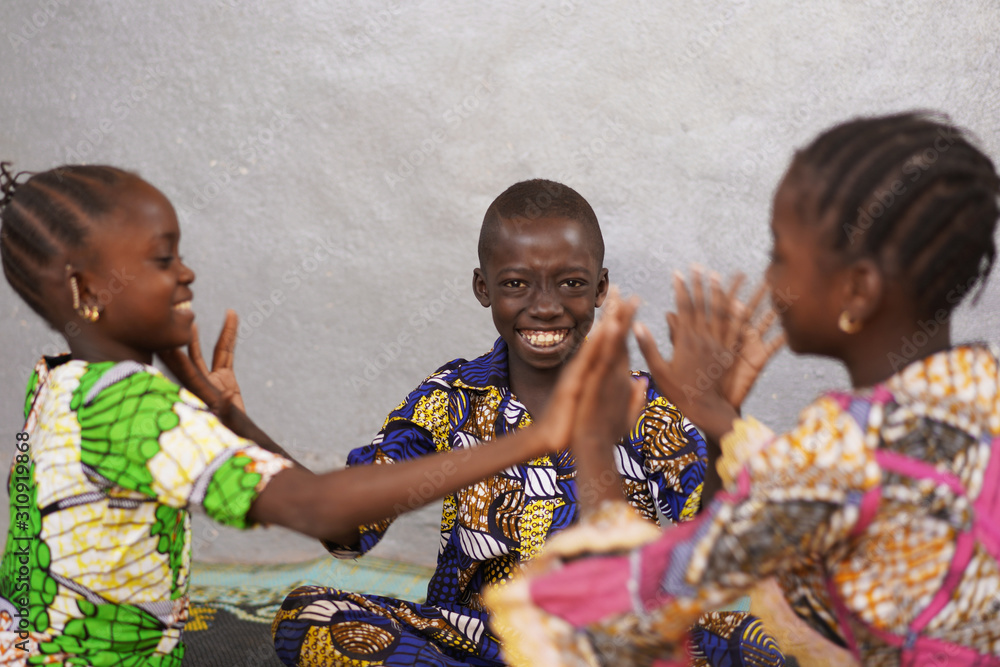These countries have the world’s oldest populations

In our quest to eat healthier, exercise more and reduce stress, it seems like our efforts are paying off: Humans are officially living longer than ever before. According to a report published by the United Nation’s Department of Social and Economic Affairs, the population of people over the age of 65 is expected to reach a staggering 1.5 billion by the year 2050, which is approximately double what it currently is. However, with this newfound longevity comes a unique set of challenges.
The same report outlines some of the concerns associated with an aging population, which include making sure the population has access to education, health care, employment opportunities and more. Making sure the elderly population is economically secure is one of the U.N.’s top concerns, and the organization states it is pushing toward policies that will “foster employment and opportunities for decent work” to ensure the longevity of the elderly population.
MORE: 114-year-old woman named the oldest living American
Data from the study shows that by 2050, four out of eight of the countries with the highest aging populations will be from Asia. Hong Kong is projected to top the chart with 40.6% of the population being over 65, followed by South Korea at 39.4% and Japan at 37.5%. Currently, Japan tops the list, followed by Italy, Finland and Puerto Rico.
In addition to aging populations, the younger population — or what the U.N. calls the youth population — is also growing. The group, which comprises people aged 15 to 24, is currently at 1.2 billion and is expected to grow 7% to 1.3 billion by 2030. While this growth is not as rapid as that of the aging population, it poses challenges and opportunities similar to theirs including ensuring adequate access to health, education and employment.
Keep reading to learn more about both of these unique populations.
Oldest Populations
Japan
Japan topped the U.N.’s list with 29.9% of its population being over the age of 65. While in many ways it’s good news that people are living longer lives, experts say declining birth rates are a threat to the overall population and that the country has experienced challenges in taking care of its older population. To remedy this, the government is engaging in efforts to promote a “child-first social economy to reverse the [low] birthrate,” according to the country’s prime minister Fumio Kishida, who spoke to The Guardian.
The high percentage of elderly people in Japan is largely due to fewer deaths from both heart disease and certain cancers. The Japanese diet plays a huge factor in the prevention of these diseases as it is low in meat, dairy and sugar but high in fish, seafood and tea.
Italy
Italy is another country famed for the long life span of its residents, with 24.1% of them being over the age of 65. You might think with all the pasta, pizza and cheese that Italians would be having a rougher go of it healthwise, but the data has consistently proven otherwise. One of the secrets to Italians’ good health is their adoption of what’s called the Mediterranean diet, which is linked to reduced heart disease. Although Italians do eat a good portion of carbs, experts explain that their diet is also rich in healthy foods such as fresh fish, vegetables and heart-healthy olive oil.
Finland
Finland was the third country to top the list, with 23.3% of its population being over the age of 65. The U.N. reports that, similar to Japan, Finland is also experiencing a decline in the birth rate. However, in the last several decades the country has focused on improving the health and overall well-being of its inhabitants which has further contributed to the growing number of elderly people. For example, the government has initiated several programs to help reduce tobacco use, making Finland one of the countries with the lowest smoking rates in Europe.
Furthermore, the country has consistently ranked as the happiest country in the world for six consecutive years, which science says also contributes to a longer life span.
Youngest Populations
On the other end of the spectrum, some countries are experiencing a rapid increase in young populations due to a mix of factors. Interestingly, the top 10 countries with the highest number of young people are all located in Africa.
Nigeria
Nigeria is at the top of the list, with a reported 42% of the population under the age of 15 and 70% under the age of 30. While reports express the exciting potential of this population being an asset to the country’s economic development, there are also concerns. Reports suggest that the country is not properly supporting the development of young people, and that poor education, health conditions and living conditions will stunt their progress. The fertility level in Nigeria is high at roughly five children per woman. Efforts such as family planning education are being put in place to help balance out the population.
Mali
Mali is also high on the list with more than half of its population under the age of 18. Mali has the third-highest fertility rate in the world, which has significantly contributed to the boom in its younger population. Reports indicate that women have an average of six children each. Similarly to Nigeria, a lack of access to education and financial insecurity puts the rising number of young people at risk.
For both aging and youth populations, one thing is clear: making sure the growing number of people on the planet has access to adequate resources is non-negotiable. Proper planning on both ends of the age spectrum can help countries ensure the needs of their youth and elderly are being met.











